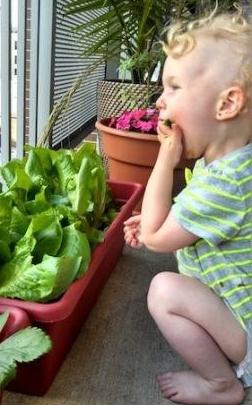Flower amaryllis - decoration of any house
Amaryllis refers to bulbous perennialplants. Leaves are tongue-shaped, shiny, having a rich green color. At the time of flowering the plant throws a powerful arrow up to sixty centimeters. At the end of it there are flowers in an amount from two to five pieces. The amaryllis flower is very beautiful.
There is not enough eloquence to describe it. Many may think that if the plant is beautiful, then it is difficult to take care of it. However, the amaryllis flower, for all its beauty, is not very fastidious. But still some rules still need to know.
Given that the plant is quite high, the potit is necessary to select heavy in order to avoid overweight and overturning. In diameter, it should be two centimeters more from the bulb, because a wide pot will allow the main bulb to let in children, that is, small bulbs. And since the kids will pull on most of the nutrients, the amaryllis flower may not appear at all.
After planting, it is best to put the pot on the window inheat the area and pour slightly cool water. When the arrow appears and becomes a height of about ten centimeters, watering should be increased. After the amaryllis fades, watering can be limited, and then not at all watered. Top dressing should be done no more than once in a decade. Transplant and renew the soil every three years after two months of flowering. Usually the amaryllis flower pleases us with its magnificent inflorescences from the middle of February to March. Flowers that have faded, it is recommended not to cut, but to pick off.
This plant has an amazing ability. When at least one flower bloom in the flower bud, then all the inflorescence can be cut off and placed in a vase full of water as a separate bouquet. Absolutely all the buds will dissolve, and the bulb will be given the opportunity to shoot one more arrow.
After flowering, you must cut the arrow. Leaves do not need to touch, otherwise the bulb will lose its power source. Watering the plant is necessary regularly and in two or three weeks once you need to make additional fertilizing. After two months, watering should be gradually reduced and then completely stopped. When all the leaves fall off, they are removed and the pot with the onion is placed in a cool darkened place. Once in three weeks it is necessary to produce watering, as the roots are alive and need a certain portion of moisture.
Amaryllis, hippeastrum are all familiesamaryllis. These families have about eighty genera and more than a hundred different species. The flower of the hippeastrum can reach a diameter of thirty centimeters. The flowers of this plant do not tolerate cold, and the flowering itself occurs at the end of spring. Even after dropping the leaves, hippeastrum needs watering.
Amaryllis belladonna also belongs to the onionperennials. The belladonna bulb is smaller in size than the hippeastrum, about six centimeters, but it has quite a lot of bulbous onions. The leaves have a rich green color. Their length reaches forty centimeters, and they appear after the flowers. In the inflorescence, there may be three to twelve. The flowering time is August-September. Watering at this time should be abundant. Do not allow the soil to dry out.
After the flowering period, the belladonna bulbshould be stored at a temperature of about ten degrees. Lighting should be bright, diffused. This is necessary for its full development. Watering does not need to be done, the bulb does not die in dryness.
It is recommended to replace it every four years inthe period when it is at rest. The daughter bulbs are separated and planted in pots about twelve centimeters in diameter. It is important to know that on the surface of the soil should be a third part of the bulb. If proper care is taken, the flowers will please you in a couple of years.
</ p>







